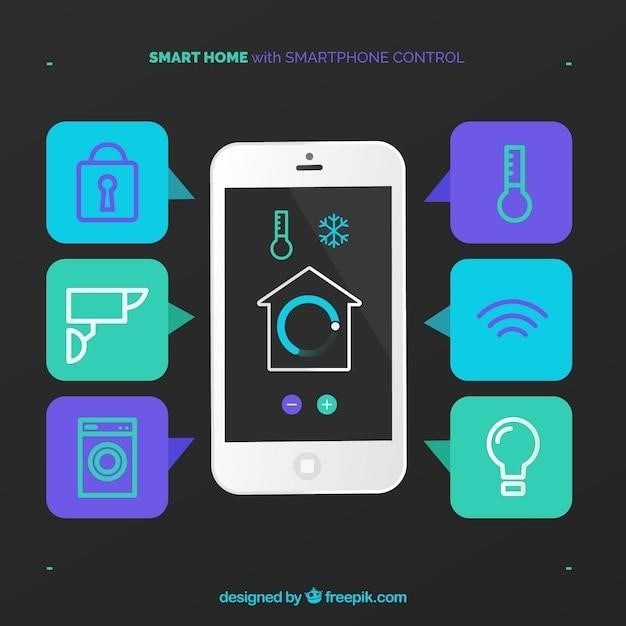Harmony 650⁚ Getting Started
Begin your Harmony 650 journey by connecting it to your computer via USB. Then‚ create a user account on the Logitech website and follow the on-screen setup wizard. This will guide you through adding your devices and creating personalized activities.
Setting up your Harmony 650 for the first time
Setting up your Harmony 650 for the first time is straightforward thanks to the intuitive Harmony Remote Software. Begin by connecting your remote to your computer using the provided USB cable. Navigate to www.logitech.com/myharmony to access the software and begin the setup process. The software will guide you through creating a user account‚ a crucial step for syncing your devices and preferences. Once logged in‚ you will be prompted to enter the manufacturer and model numbers of each device you wish to control – your TV‚ DVD player‚ sound system‚ etc. Accurate information is vital for seamless operation. The software uses this data to create a detailed profile of your home entertainment setup. This process ensures that the Harmony 650 understands the commands and communication protocols of each device. Take your time and double-check all entries; accuracy is key to a smooth setup. After entering device information‚ the software will assist you in creating Activities‚ pre-programmed sequences of commands for common tasks like “Watch TV” or “Listen to Music.” These Activities are the heart of the Harmony 650’s user-friendly design. The software will walk you through assigning buttons on your remote to launch these Activities‚ further streamlining your control over your home entertainment system.
Creating your user account and connecting the remote
To begin the Harmony 650 setup‚ you must first create a Logitech user account. This account is essential for accessing the Harmony software and syncing your remote with your devices. Visit the Logitech Harmony website (www.logitech.com/myharmony) and follow the instructions to create a new account. You’ll need to provide a valid email address and create a secure password. Once your account is created‚ you’ll be able to log in and access the Harmony software. Next‚ connect your Harmony 650 remote to your computer using the included USB cable. Ensure the smaller end of the cable is firmly inserted into the USB port on the remote‚ and the other end is securely plugged into a USB port on your computer. The software will automatically detect the remote once connected. If the software doesn’t detect the remote‚ double-check the cable connections and restart your computer. A successful connection is indicated by the software recognizing the Harmony 650. The software will then guide you through a series of steps to configure your remote and control devices. This process involves entering the manufacturer and model numbers of each device you want to control‚ allowing the Harmony 650 to learn their specific commands. Accurate information is critical for proper operation. During the setup‚ the software may also request you to install any necessary software updates for your Harmony 650 to ensure optimal performance and compatibility.
Setting up the devices you want to control
After establishing your user account and connecting your Harmony 650‚ the next crucial step is to add the devices you wish to control. The Harmony software will guide you through this process‚ making it relatively straightforward. Begin by selecting the “Add Devices” option within the software. You will then be prompted to enter the manufacturer and model numbers of each device. This information is usually found on a sticker on the device itself or in its instruction manual. Enter the details carefully and accurately‚ as any errors may lead to incorrect functionality. The software boasts a comprehensive database of devices‚ so finding your specific model should be simple. If you encounter difficulties‚ the software may offer suggestions or alternatives. Once you’ve entered the required information for each device‚ the software will add them to your Harmony 650’s system. It’s important to add all devices you intend to control‚ even those you may not use frequently. This allows the Harmony 650 to effectively manage your home entertainment system. You may need to specify the input sources for each device‚ such as HDMI‚ component video‚ or composite video. The software will often provide clear instructions and visual aids to help you identify the correct input for each device. Once all devices are added and their inputs are correctly identified‚ the software will update your Harmony 650 with this information. This may take a few minutes depending on the number of devices. After the update is complete‚ proceed to the next step of configuring activities.

Harmony 650⁚ Activities and Controls
Mastering Activities is key to simplifying your home entertainment. Learn how to create‚ customize‚ and utilize these pre-programmed sequences to control multiple devices with a single button press. Explore the on-screen commands for enhanced control.
Understanding Activities and how they work
The Harmony 650’s brilliance lies in its Activity-based control. Instead of controlling each device individually‚ you create “Activities” – pre-programmed sequences that bundle commands for multiple devices. For example‚ the “Watch TV” Activity might turn on your TV‚ cable box‚ and sound system‚ switching them to the correct inputs simultaneously. The beauty is seamless transitions; one button press initiates the entire entertainment setup. This eliminates the need to fumble with multiple remotes‚ simplifying your viewing experience. Activities streamline your home theater control. They are the cornerstone of the Harmony 650’s user-friendly design. The software guides you through setting up these Activities based on your devices‚ ensuring a personalized experience. Each Activity button on your remote executes a specific sequence‚ seamlessly coordinating your devices. Imagine the convenience⁚ one button for movie night‚ another for listening to music – all perfectly orchestrated.
Using Activity buttons and the on-screen commands
Once you’ve set up your Activities‚ using the Harmony 650 becomes intuitive. Each Activity button (like “Watch TV” or “Listen to Music”) initiates a pre-programmed sequence. Pressing an Activity button triggers the corresponding actions⁚ powering on necessary devices‚ selecting the correct inputs‚ and adjusting volume levels. The Harmony 650’s screen displays relevant commands for the active Activity‚ offering additional control. This on-screen display provides quick access to functions like changing channels‚ adjusting the volume‚ or selecting inputs. The screen dynamically adapts to the selected Activity‚ ensuring you only see the commands relevant to that particular entertainment setup. Navigation through these on-screen commands is straightforward‚ allowing you to fine-tune your viewing or listening experience. Moreover‚ the screen provides feedback‚ displaying the current status of your devices and the selected Activity. This visual confirmation ensures everything functions as expected‚ enhancing the overall user experience. The combination of Activity buttons and on-screen commands provides comprehensive control over your home entertainment system.
Customizing Activities and button functions
The Harmony 650 allows extensive customization of both Activities and button functions‚ tailoring the remote to your specific preferences. Through the Harmony software‚ you can rename Activities for clarity‚ making it easier to identify each preset. Beyond renaming‚ you can modify the devices included in each Activity. Perhaps you sometimes watch movies with just the TV and Blu-ray player‚ and other times you use a surround sound system. The software allows you to create different “Watch Movie” activities for these scenarios. You also have granular control over the commands within each Activity. Need a specific button to dim the lights? Or perhaps you want a single button to switch your TV to a particular HDMI input? The Harmony software allows this level of fine-tuning. You can map various commands‚ including those learned from your original remotes‚ to any available button. This level of personalization ensures the Harmony 650 functions seamlessly with your unique entertainment habits‚ providing a tailored user experience beyond the pre-programmed Activities. Remember to test your custom settings after making any changes to ensure everything works as desired.

Harmony 650⁚ Advanced Features
Explore advanced options like adding passthrough devices for seamless signal routing. Learn how to teach the remote new commands and fine-tune delays for optimal responsiveness. These features enhance control and customization.
Adding extra devices (passthrough) to an Activity
Sometimes‚ your home entertainment setup involves devices that act as intermediaries‚ passing signals without modification. A common example is a DVD recorder used to record programs from a satellite receiver or cable box. In such cases‚ you need to add these intermediary devices as “passthrough” devices within your Harmony 650 Activities. This ensures that the Harmony 650 correctly controls the entire signal chain. To accomplish this‚ access the Harmony software on your computer. Navigate to the section where you manage your devices and activities. You’ll find an option to add devices or modify existing activities. Within that area‚ you’ll see a way to designate a device as a “passthrough” device. Select the relevant device from the list of your connected equipment. Then‚ mark or specify that this device should be considered a passthrough device within the specific Activity. This will include it in the sequence of commands without interfering with or altering the signal. Once you’ve added the passthrough device‚ save your changes‚ and the Harmony 650 will incorporate it into the chosen Activity. Remember to test the activity thoroughly after making these modifications to ensure everything works as expected. This process makes your Harmony 650’s control comprehensive‚ even with complex setups involving devices that only pass signals.
Teaching the Harmony 650 new commands
The Harmony 650 boasts a “Learn IR” feature‚ enabling it to acquire commands from your existing remotes. This proves invaluable if your device isn’t listed in Logitech’s database or if you need to program a specific function not already included. To initiate this process‚ launch the Harmony software on your computer. Then‚ navigate to the section for adding or modifying commands. Look for a function or option explicitly labeled “Learn IR” or “Teach New Command.” The software will likely guide you through connecting your original remote to the Harmony 650 using the provided USB cable. Follow the on-screen prompts‚ which will typically involve holding both remotes near each other. The Harmony 650 will prompt you to press a button on your original remote. This action transmits the IR signal to the Harmony 650. The software will then prompt you to give a name to the newly learned command‚ ensuring clear identification within the Harmony 650’s system. Once you’ve named the command‚ save your changes. The Harmony 650 will now incorporate this newly learned command into its operations. You can then assign this new command to a specific button on your Harmony 650 remote or to a button within a particular Activity‚ allowing for complete customization of your remote control experience. After learning the command‚ always test its functionality to verify correct operation.
Adjusting delays and speed settings
If your Harmony 650 experiences issues controlling devices‚ adjusting the delay settings might resolve the problem. Different devices react to commands at varying speeds. The Harmony 650 allows customization of these delays to ensure seamless operation. Access these settings through the Harmony software on your computer. Navigate to the device-specific settings. You’ll likely find options for “Power On Delay‚” “Inter-key Delay‚” and “Input Delay.” Each setting influences a different aspect of command execution. The “Power On Delay” adjusts the time the Harmony 650 waits after sending a power-on command before sending subsequent commands. The “Inter-key Delay” affects the timing between commands sent to the same device. The “Input Delay” addresses the time required for a device to switch inputs after receiving the command. Experiment with small increments to optimize performance. If commands aren’t registering correctly‚ slightly increase the delay time. Conversely‚ if the delays feel too lengthy‚ reduce the values. Each device may require individual adjustments. After making changes‚ remember to test the commands thoroughly to ensure the adjustments have improved responsiveness. Always save your changes within the Harmony software before disconnecting the Harmony 650. This ensures the updated settings are saved to the remote itself. Note that excessive delays can make the remote less responsive‚ whereas insufficient delays might lead to missed commands. Finding the optimal balance is key for smooth operation.